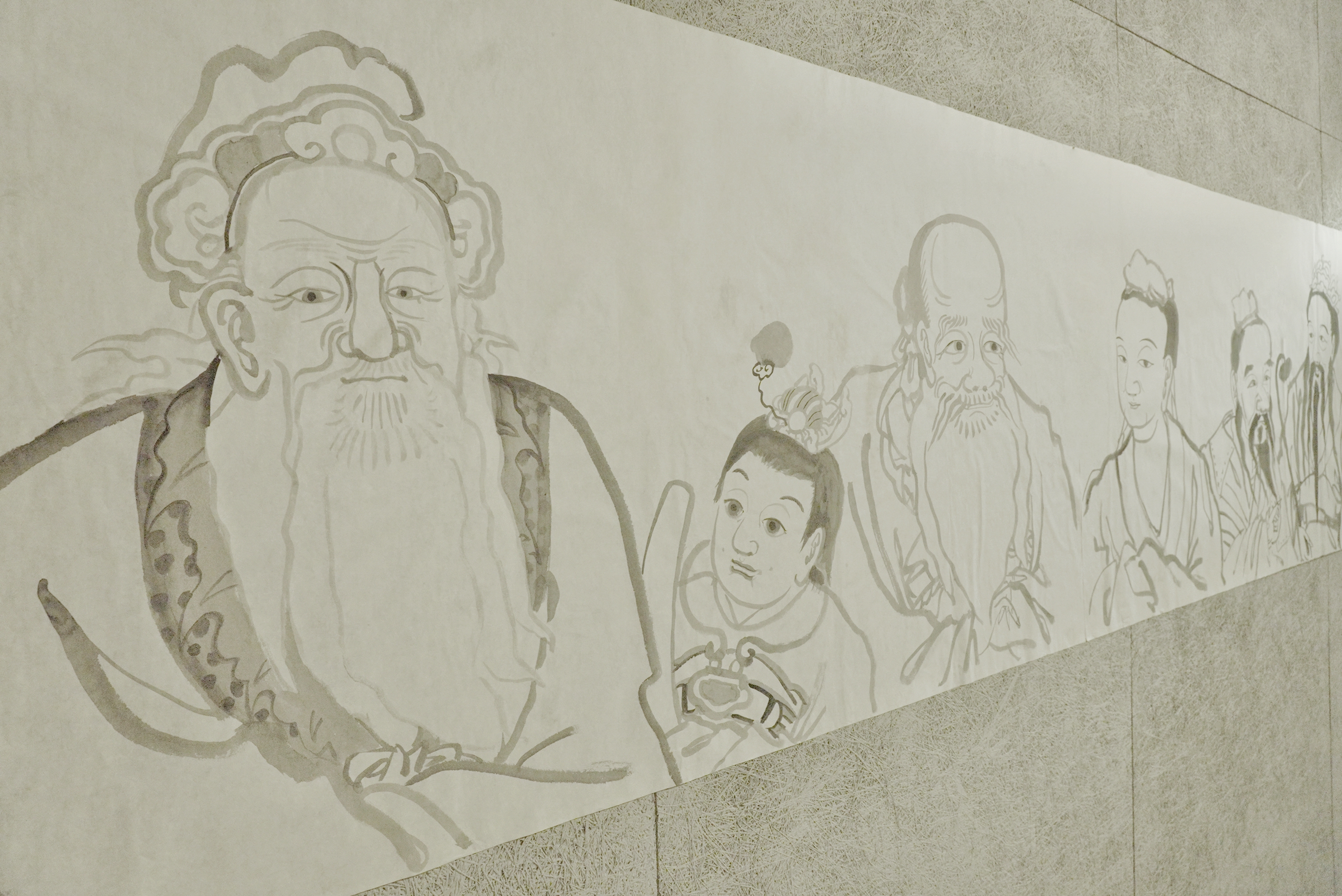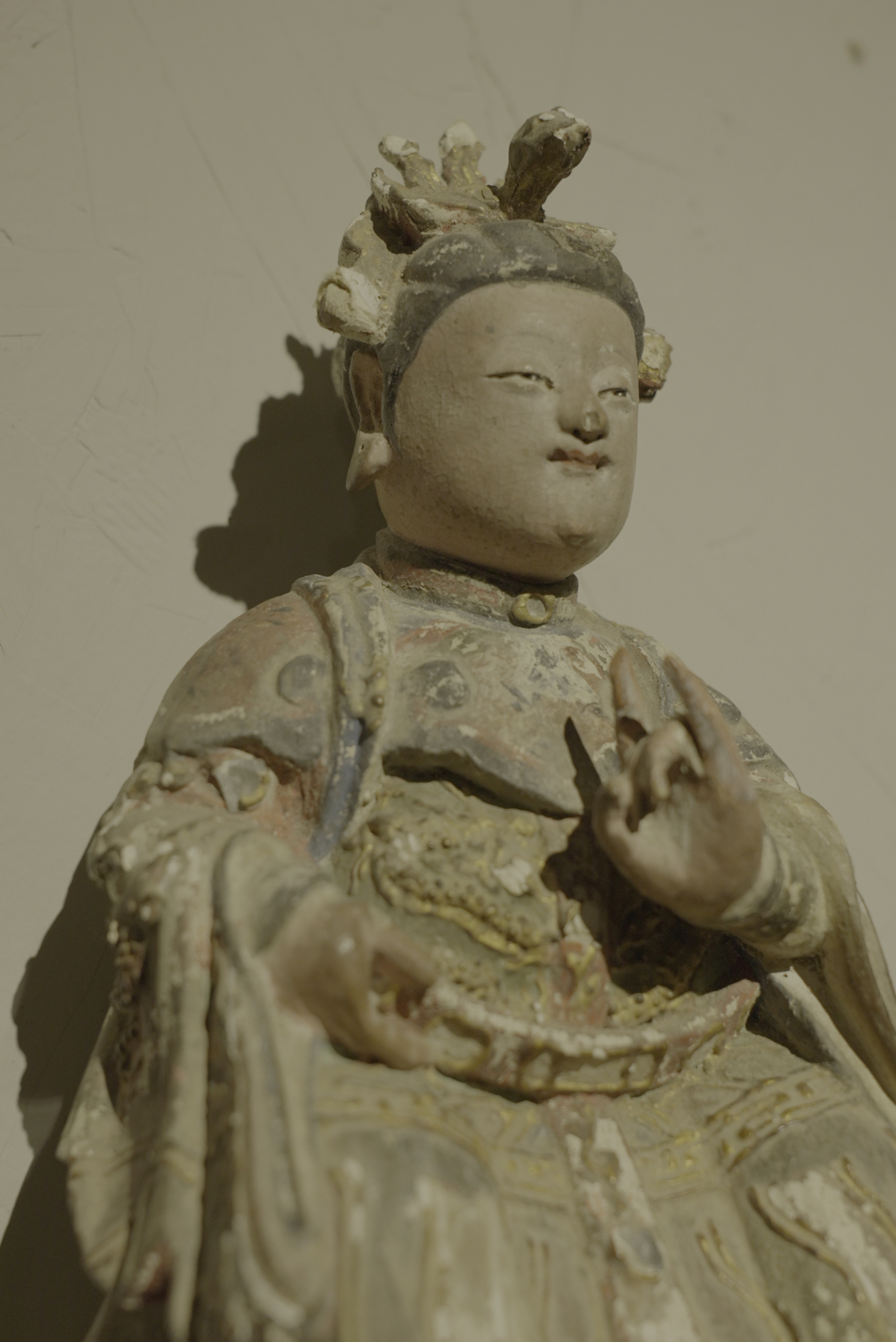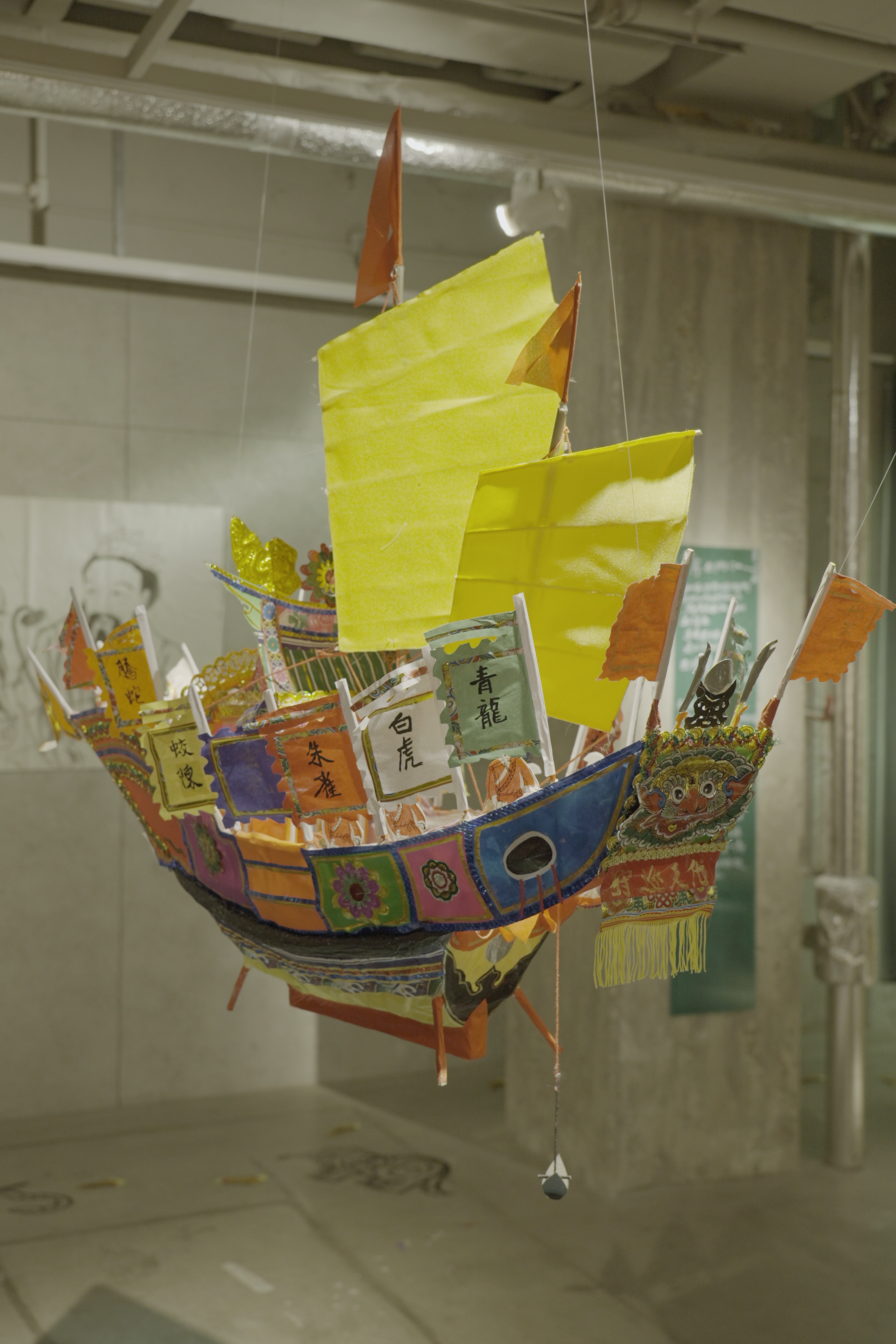Shows
Chen Huaxian’s “Peach Branch Encounters”


DEC 12, 2023–FEB 12
“Chen Huaxian: 桃枝遊 Peach Branch Encounters—Exploring the Hidden Worlds of Ancient Witchcraft and Folk Beliefs in Minnan”
AnEarGallery
Xiamen
At AnEarGallery, an independent art space that runs a book store and an independent newspaper, 啲叻DEALERS, Xiamen-based artist Chen Huaxian didn’t showcase tangible “artworks” like in typical solo exhibitions. Instead, in “Peach Branch Encounters,” Chen acted as an interpreter and tour guide for his longtime study into Minnan’s folk beliefs—particularly, the traditional Bu Yun (boost fortune) ritual from local fishermen—and transformed them into a lighthearted and alluring journey. The exhibition also obscured the line between contemporary art and traditional craft-making by traveling beyond the faith and reverence for crafts’ symbolic power by selectively showcasing Chen’s collection of small deity statues, papier-mâché works, scroll paintings, and embroidery from the Minnan region.

Having grown up in Xiamen, where his grandparents from Quanzhou and mother from Zhangzhou moved to, Chen started learning painting by copying deity statues. In 2017, he officially began studying Santan Mantras (Three-Altar Mantras) in the Jinfa Temple in Zhangzhou. These three major cities in Minnan are covered by thousands of temples dedicated to a vast combination of gods: from Buddhism to Taoism, from different ancestries to various versions of folk legends and stories. These temples, filled with wood carvings, murals, and embroidery, became Chen’s childhood art museums and inspirations.

Chen’s family experienced uncertainty due to their move, and uncertainty caused by mobility demands psychological reliance. Minnan people search for protection and guidance from polytheism, which is incorporated into festive and performative representations so that dense passions can be released and celebrated. The mixture of religions reflects a blunt, practical attitude in which they distribute suitable duties or functions to different deities. This was vibrantly illustrated by Chen’s comic, ink line-drawings on the floor and walls and the semi-translucent acrylic panels interspersed throughout the six exhibition sections of “Entrance,” “Hexagonal Pavilion,” “Tiangong (Jade Emperor) Yamen (Governmental Office),” “East Mountain Yamen,” “Water Mansion Yamen,” and “Lü Mountain.”
Handwritten explanations and infographics seemed to transmit these sacred figures from a religious space into an immersive theater. The colors of the panels resonate with specific elementary colors often used in local architectural murals and temple painting scrolls. For example, near the statues of Mazu lay “Thousand-Mile Eyes” and “Favorable Wind Ears,” the guardian deities accompanying ship navigation that Chen introduces on the sea-blue panel. On the other hand, statues of “Lady by the Water” and “Third Lotus Prince Nezha” served as tour guides for the newcomers to the Tiangong Yamen. By juxtaposing the various statues, works, materials, and “captions,” Chen showed how deities are treated as believers’ psychological relatives, and ancestors’ ghosts are equally respected as deities.

When observing the meticulously made papier-mâché commission works from local artisan master Lin Rongming, one discovers an intense expressiveness, from subjects’ micro facial expressions to their clothes’ details with delicate metaphors. The flower clusters in the paper Hexagonal Pavilion represent fortune and offspring (referencing an ancient mythology about how humans were born from a flower garden); a ride on a lifelike paper boat that enters the Water Mansion Yamen, and encountering sketched soldiers of crabs, shrimps, snakes, and tortoises who make the path for you by simply “bribing” them with the zhiyuan (paper money). Mini steps towards the Tiangong Yamen create a psychological spatial relationship between the gallery and the legendary heavenly office. Praying or speaking to these gods becomes an important, even essential passage for communicating emotions such as anxiety or desperation, and often, it also becomes a journey of searching for answers.

Initially, most of the shown objects may appear to have been brought from local temples or folk museums. However, a mirror and several electronic candles on top of a table, plus a pair of cloud-shaped shining acrylic panels with drawn faces of a dragon and a tiger, welcomed visitors with their bodies in flickering reflected images. This delivered an alternative sensation towards the mysterious worlds of folk beliefs and referenced people’s ancient worship of light. Annotated illustrations or illustrated texts of deities are created and refined through generations of people who pass on their learnings on ethics and life cycles. The deities are well-crafted icons and companions for anyone seeking an open dialogue. Somehow, one imagines a spirit floating along with a drawn smoke that expands from the tip of a sword underneath the table, following the hand-drawn ink map of the hidden worlds and crossing over the boundary between life and death, present and future. Chen’s exhibition reenacts the imagination between everyday life and the mythological, where the journey became an on-site exploration and portrayal of more day-to-day emotional bonds.
Ling Gu is an independent writer, translator, editor, and curator based in Shanghai and Shenzhen.







